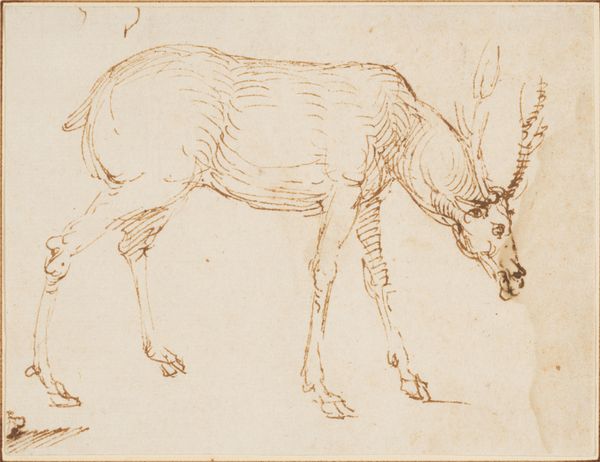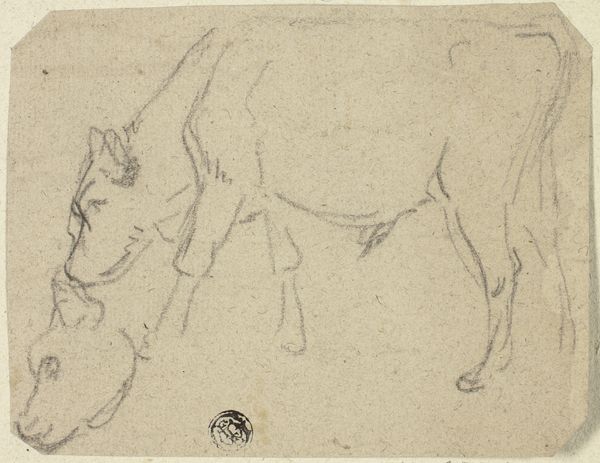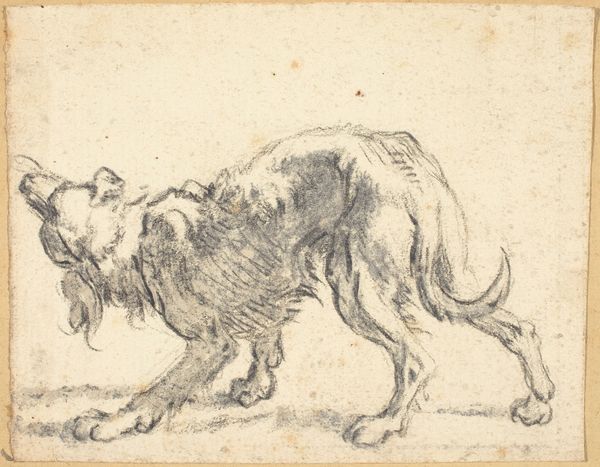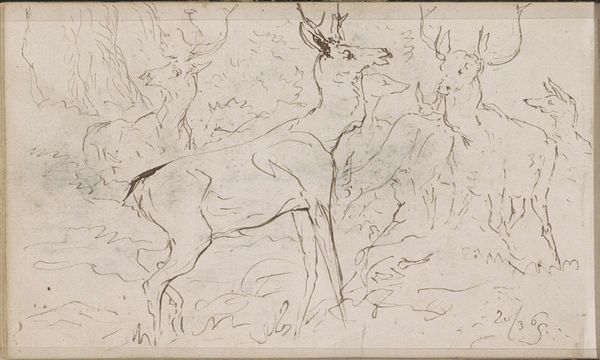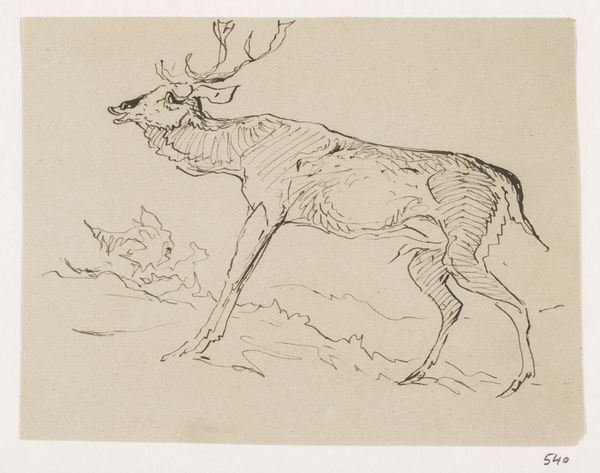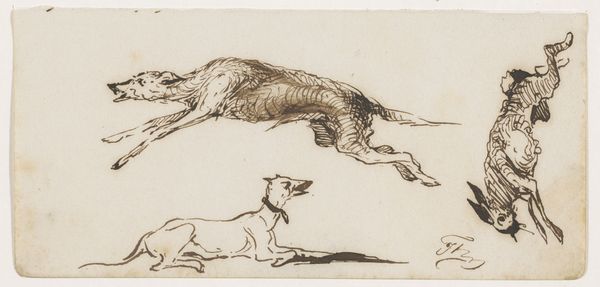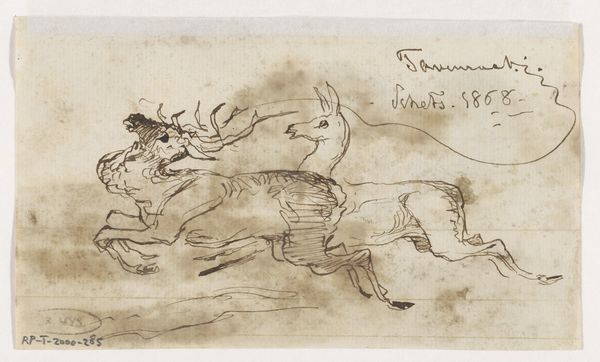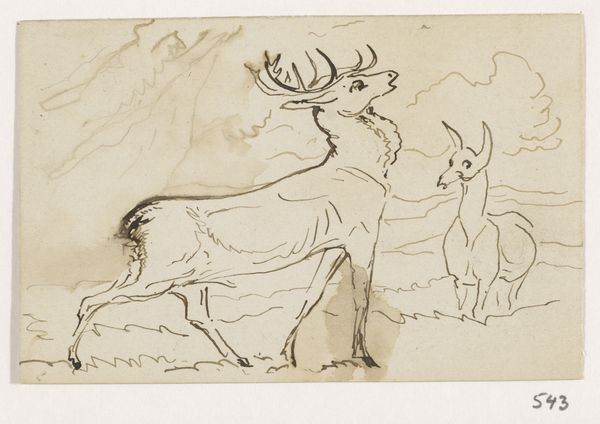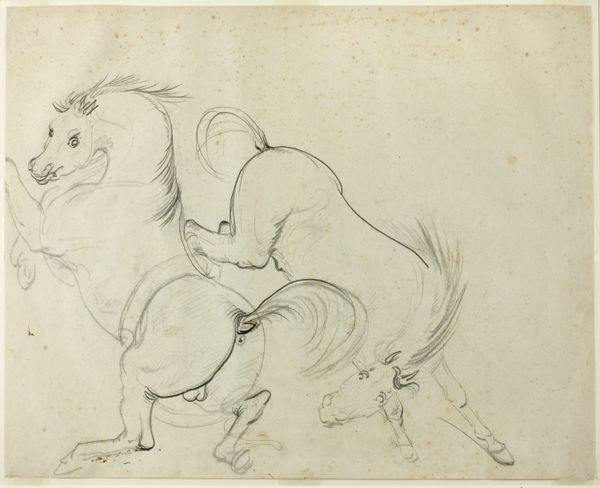
Studies of a Stag 1430s
0:00
0:00
drawing, print, pencil
#
drawing
#
animal
# print
#
landscape
#
figuration
#
11_renaissance
#
pencil
#
pencil work
Dimensions: sheet: 2 11/16 x 4 3/16 in. (6.8 x 10.7 cm)
Copyright: Public Domain
Curator: Here we have "Studies of a Stag," a drawing by Stefano da Verona from the 1430s, currently housed in the Metropolitan Museum of Art. Editor: There’s something quite captivating in its simplicity. The fluid lines, capturing the essence of the stag, possess an almost dreamlike quality. I can almost feel the softness of its coat despite it being only a line drawing. Curator: The loose, suggestive lines are key to understanding its function. Drawings such as this were important to workshop practice; artists across time relied upon preparatory drawings to guide and enable later productions of objects. Note, also, the interesting lack of setting or grounding—something we would expect in this period. Editor: Right, because, Stefano da Verona, positioned within the late Gothic or International Gothic style, moves past earlier conventional or typical landscape backgrounds. But I’d also ask—what does depicting a stag offer culturally? We see hunting imagery often reflecting ideas about masculinity, nobility, and control of nature. Curator: Precisely. This brings up complex relations to access. Here we must explore what hunting meant socially and legally during the 1430s in Northern Italy. If a culture’s art displays wealth, leisure, or prowess with nature, we must ask about who benefits from this visual and economic economy. Editor: The deliberate rawness in his style really lets us consider all the symbolic associations bound to hunting, power and masculinity in 15th-century courts. Curator: Exactly. And by leaving the stag somewhat incomplete, are we left with a reflection on what has not been tamed or that still lacks authority? Stefano presents so many important cultural perspectives to consider here. Editor: The ambiguity absolutely compels me to want to engage. It highlights those contradictions within Renaissance courtly life, I think. Curator: It leaves one with an important invitation: to consider this single stag not just as art, but a question about that era’s artifice. Editor: An interesting perspective; the experience shifted from the formal aesthetic to the deeper implications of imagery. Thanks.
Comments
No comments
Be the first to comment and join the conversation on the ultimate creative platform.
